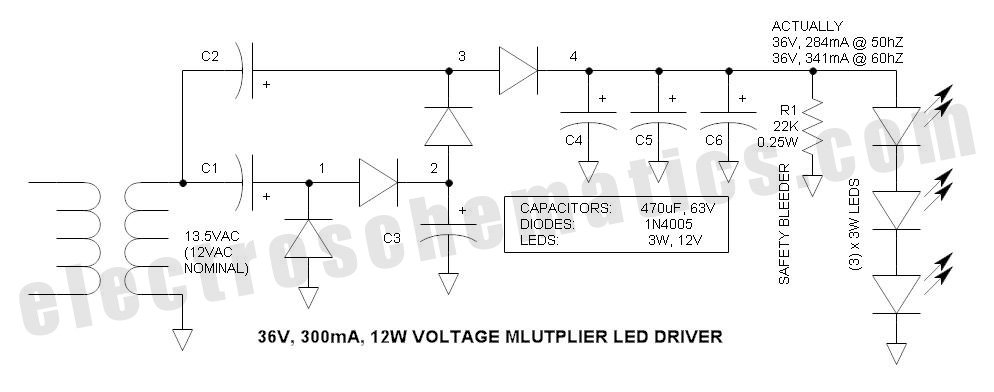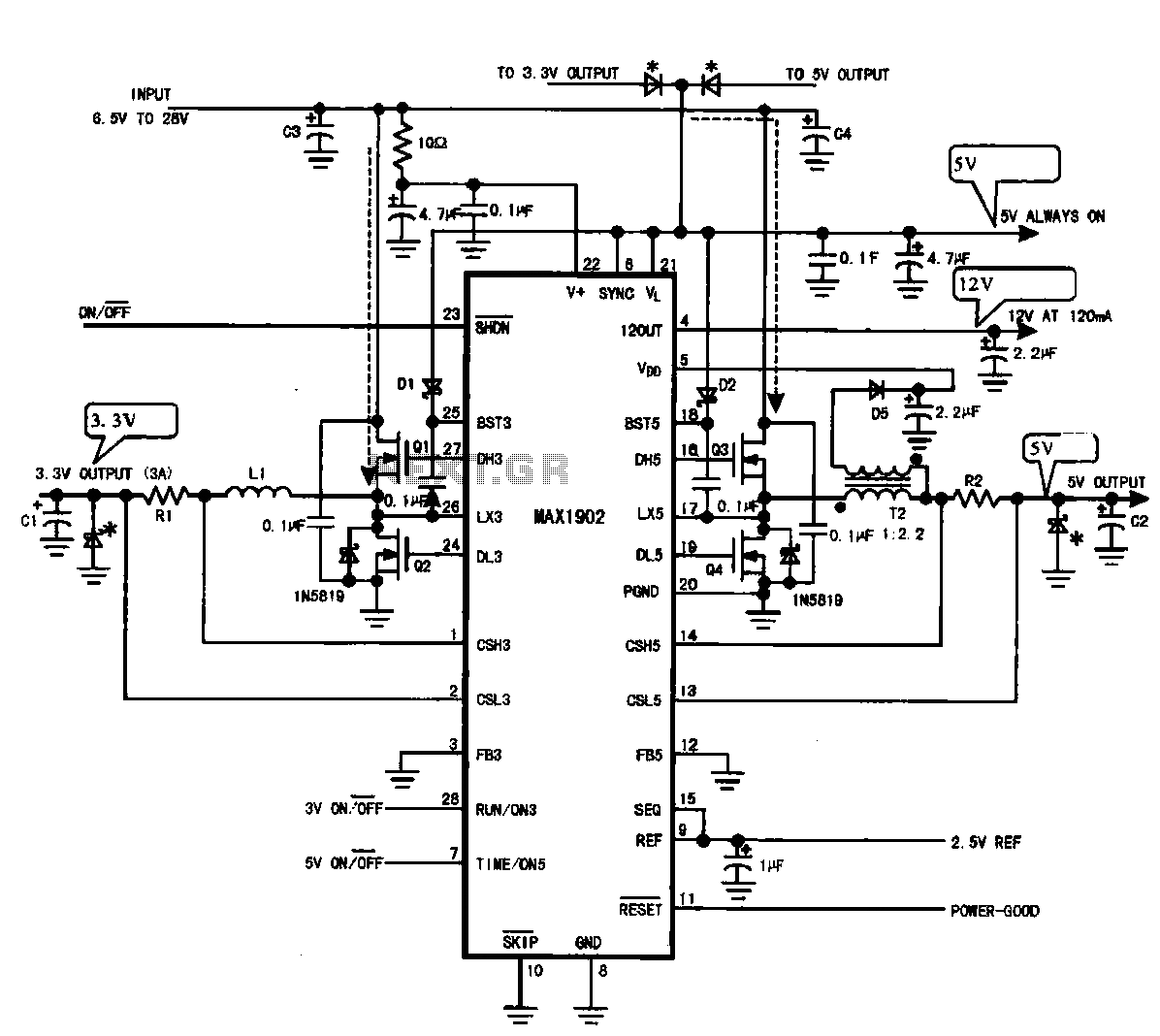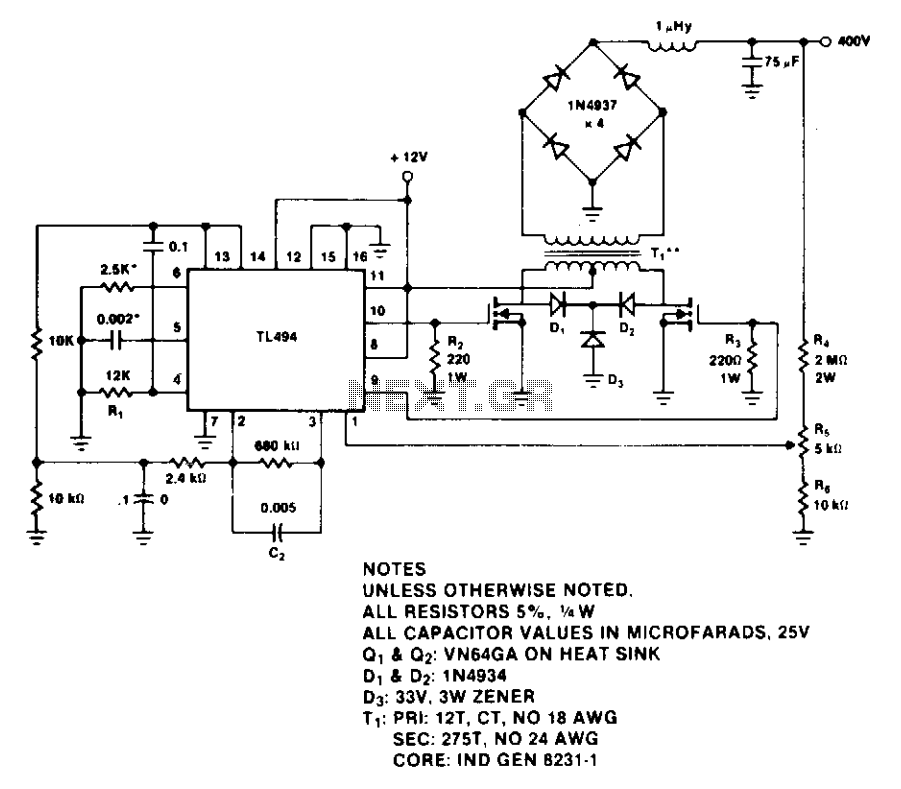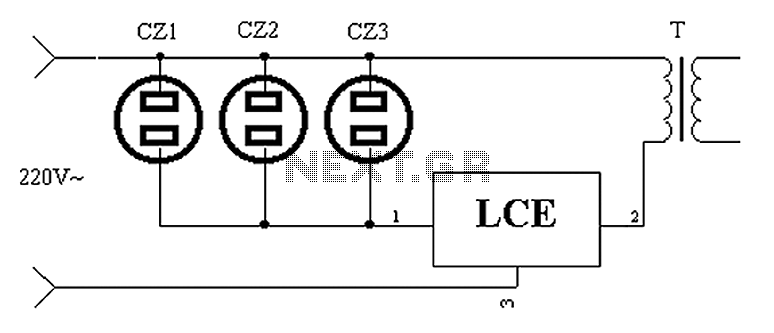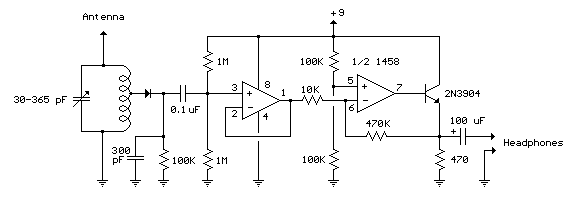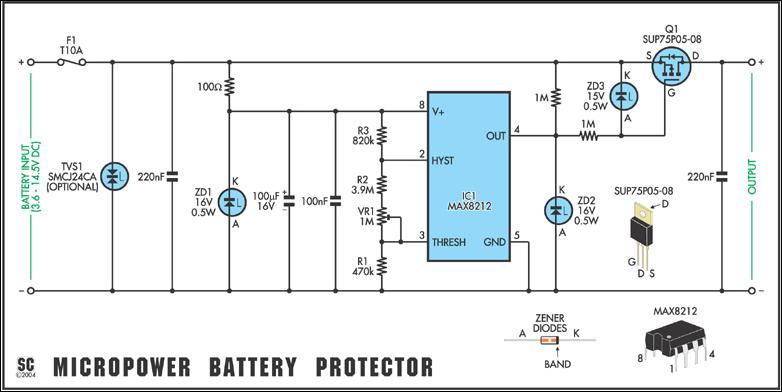
5V Regulated Power Supply
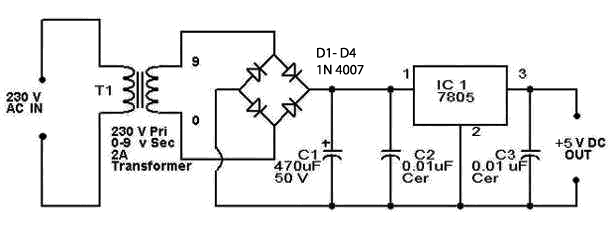
5V regulated power supply circuit, 5V power supply circuit, regulated power supply circuit diagram.
The 5V regulated power supply circuit is designed to provide a stable output voltage of 5 volts, which is essential for powering various electronic devices and circuits. This type of power supply typically utilizes a transformer, a rectifier, and a voltage regulator to ensure that the output voltage remains constant, even when the input voltage or load conditions change.
The circuit begins with an AC power source, which is connected to a step-down transformer. The transformer reduces the high AC voltage to a lower AC voltage suitable for the application. The output of the transformer is then fed into a rectifier, which can be a full-wave or half-wave rectifier, depending on design requirements. The rectifier converts the AC voltage into pulsating DC voltage.
Following the rectification process, the pulsating DC voltage is smoothed using a filter capacitor. This capacitor charges during the peaks of the rectified voltage and discharges during the troughs, effectively reducing the ripple voltage and providing a more stable DC output.
To achieve the desired output voltage of 5V, a linear voltage regulator, such as the 7805, is employed. The 7805 regulator takes the smoothed DC voltage and outputs a regulated 5V, ensuring that fluctuations in the input voltage or load do not affect the output voltage. Additional capacitors may be placed at the input and output of the regulator to improve transient response and stability.
This power supply circuit is widely used in various applications, including microcontroller circuits, sensor systems, and communication devices, where a reliable 5V supply is crucial for proper operation. Proper heat dissipation measures should also be considered, as linear regulators can generate heat when there is a significant voltage drop across them, especially under higher load conditions.5v regulated power supply circuit, 5v power supply circuit, regulated power supply circuit diagram.. 🔗 External reference
The 5V regulated power supply circuit is designed to provide a stable output voltage of 5 volts, which is essential for powering various electronic devices and circuits. This type of power supply typically utilizes a transformer, a rectifier, and a voltage regulator to ensure that the output voltage remains constant, even when the input voltage or load conditions change.
The circuit begins with an AC power source, which is connected to a step-down transformer. The transformer reduces the high AC voltage to a lower AC voltage suitable for the application. The output of the transformer is then fed into a rectifier, which can be a full-wave or half-wave rectifier, depending on design requirements. The rectifier converts the AC voltage into pulsating DC voltage.
Following the rectification process, the pulsating DC voltage is smoothed using a filter capacitor. This capacitor charges during the peaks of the rectified voltage and discharges during the troughs, effectively reducing the ripple voltage and providing a more stable DC output.
To achieve the desired output voltage of 5V, a linear voltage regulator, such as the 7805, is employed. The 7805 regulator takes the smoothed DC voltage and outputs a regulated 5V, ensuring that fluctuations in the input voltage or load do not affect the output voltage. Additional capacitors may be placed at the input and output of the regulator to improve transient response and stability.
This power supply circuit is widely used in various applications, including microcontroller circuits, sensor systems, and communication devices, where a reliable 5V supply is crucial for proper operation. Proper heat dissipation measures should also be considered, as linear regulators can generate heat when there is a significant voltage drop across them, especially under higher load conditions.5v regulated power supply circuit, 5v power supply circuit, regulated power supply circuit diagram.. 🔗 External reference
